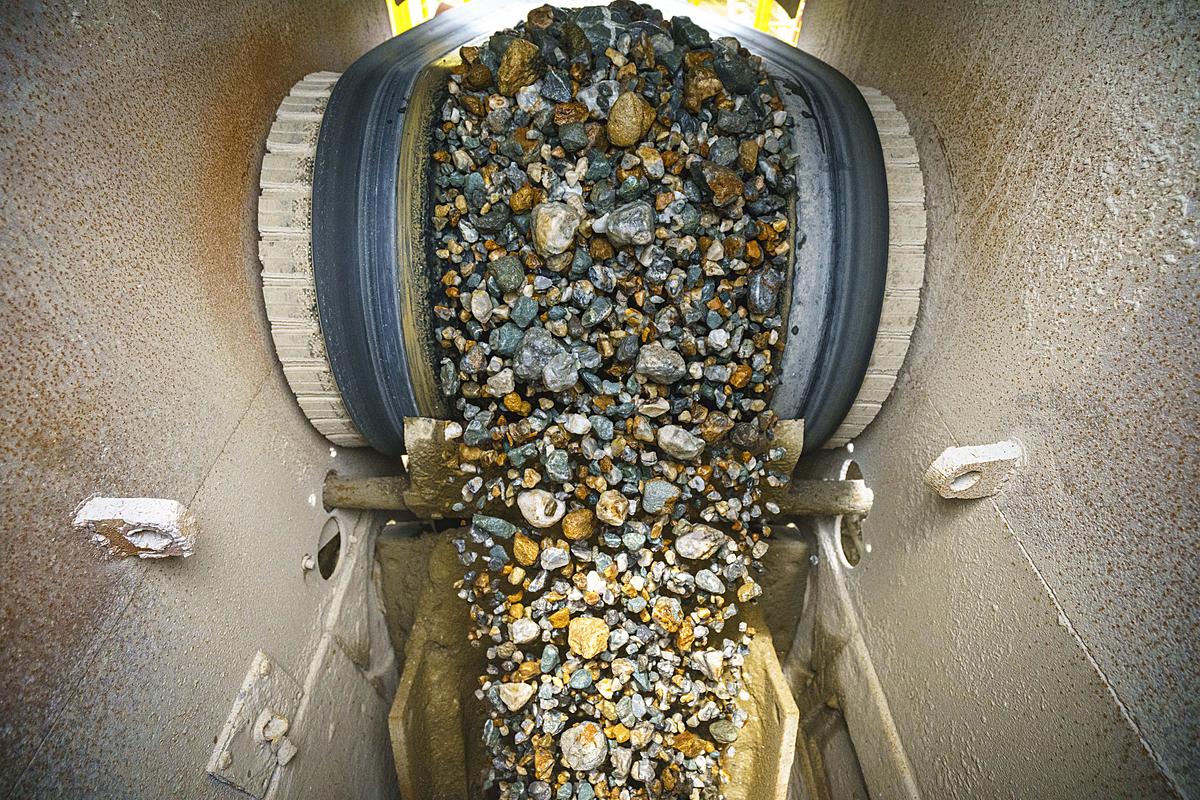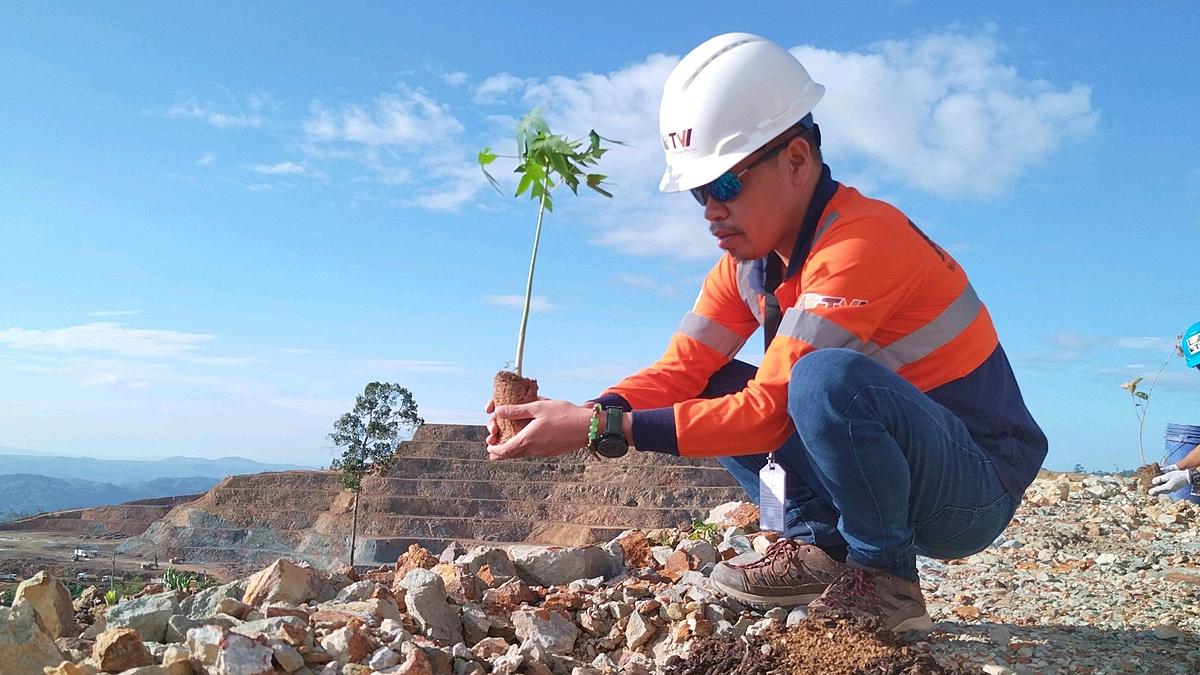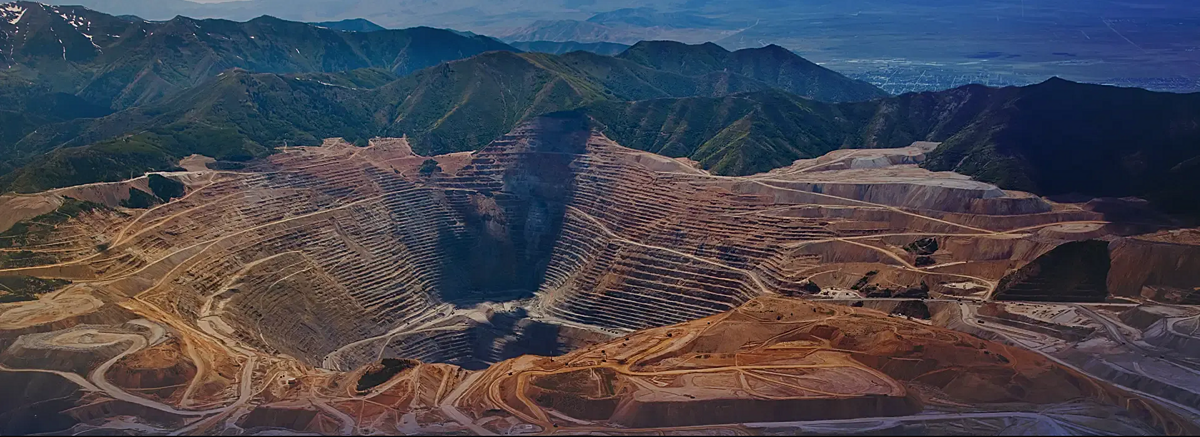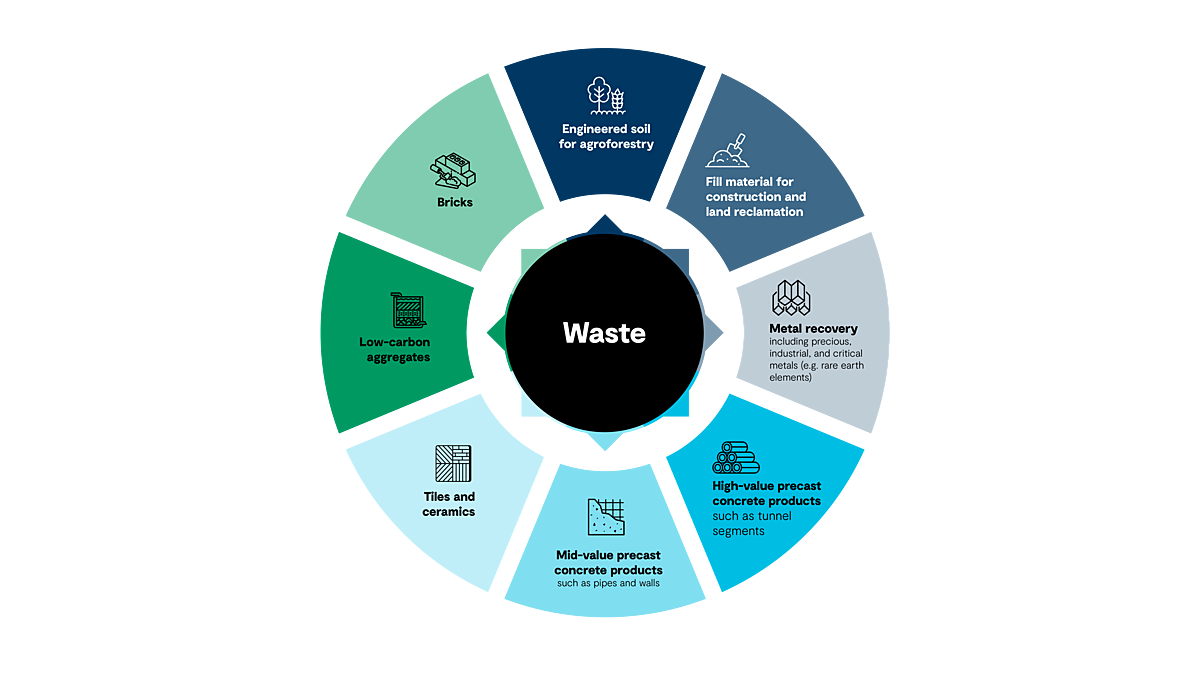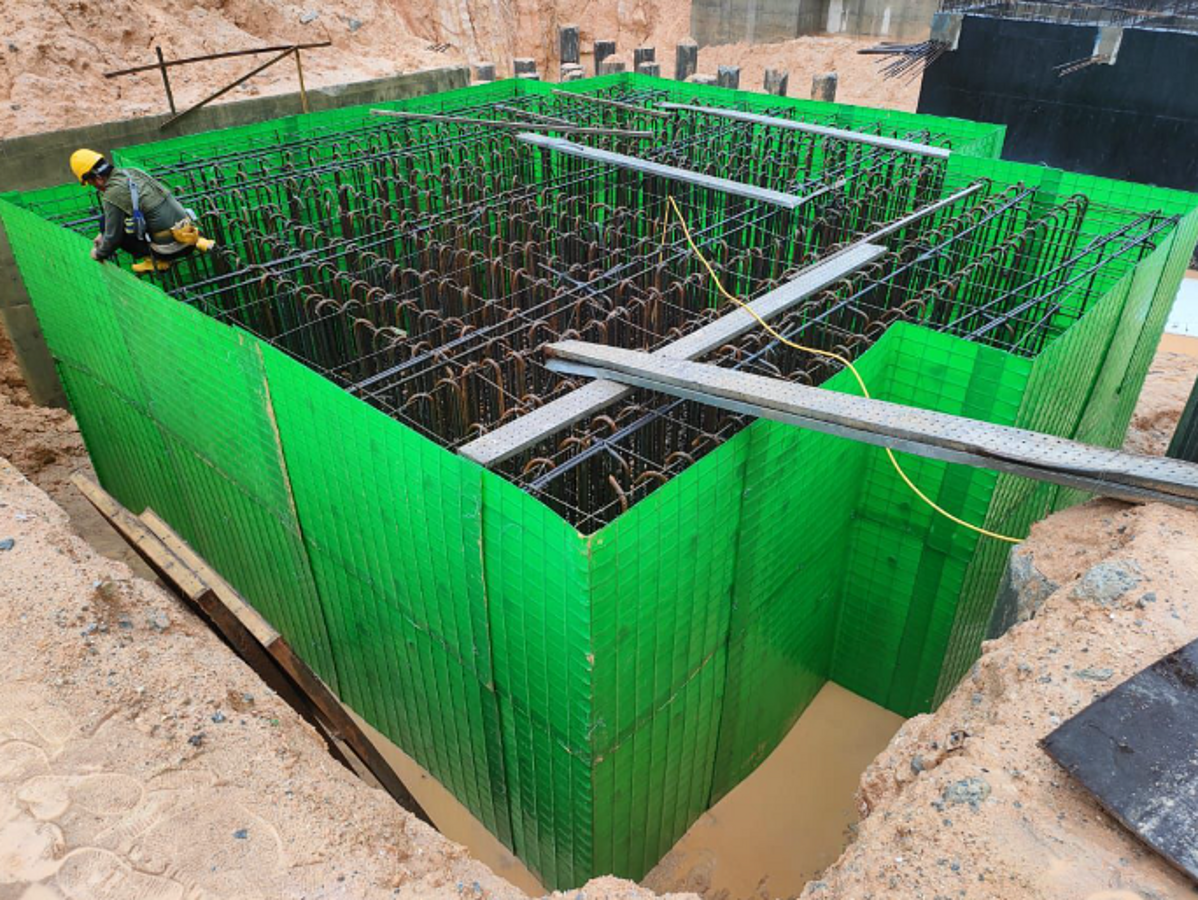Photo Credit: Masbate Gold Project
Metallic mineral production value advanced by 24.50% or PHP13.50 billion in H1 2021 from PhP55.13 billion to PhP68.63 billion, year-on-year.
The telling factor for this sterling performance was the continued strong metal prices during the period. Prices of base metals, copper, and nickel grew by 65% and 40%, respectively. Likewise precious metals, gold, and silver went up by 10% and 59%, respectively.
In terms of contribution to the metallic production value, nickel together with its nickel products accounted for 53.44% or PhP36.68 billion followed by gold with 34.84% or PhP23.91 billion. Copper took the third spot at PhP7.46 billion or 10.87% while the collective values of silver, iron ore, and chromite were less than 1% or PhP0.58 billion.
Having bullish nickel metal price as its backdrop in H1 2021 nickel together with its nickel products continued to rule the production scene contributing more than 53% of the country’s production value from PhP25.17 billion to PhP36.68 billion year-on-year, a growth of almost PhP11.51 billion or 46%. Breaking it down further, nickel direct shipping ore accounted for 58% or PhP21.42 billion while mixed nickel-cobalt sulfide tendered 41% or PhP15.07 billion. Scandium oxalate came up with less than 1% or PhP0.19 billion. Taganito HPAL Nickel Corporation (THPAL) produces both mixed nickel-cobalt sulfide and scandium oxalate. While Coral Bay Nickel Corporation (CBNC) only produces mixed nickel-cobalt sulfide.
Nickel ore production volume and value went up by 39% and 98% from 109,471 metric tons with an estimated value of PhP10.79 billion to 151,646 metric tons with an estimated value of PhP21.42 billion. Prices of nickel are at their sweetest at US$17,490.15 per metric ton from US$12,473.17 per metric ton, year-on-year, a considerable price difference of US$5,017 per metric ton. The top three producers for the first half were Taganito Mining Corporation (TMC) with 28,935 metric tons followed by Rio Tuba Nickel Mining Corporation (RTNMC) with 25,301 metric tons; and Platinum Group Metals Corporation with 12,977 metric tons. TMC and RTNMC supply all the low-grade limonite ore feed requirements of THPAL and CBNC plants, respectively. The limonite ores delivered to THPAL and CBNC were included in the total ore production of TMC and RTNMC. In terms of production by Province, Surigao del Norte led with 51,162 metric tons, followed by Palawan with 39,190 metric tons, Surigao del Sur took the third spot with 21,060 metric tons. While Zambales accounted for 16,757 metric tons closely followed by Agusan del Norte with 16,530 metric tons and Dinagat Island with 6,946 metric tons. Out of the 28 listed operating nickel projects, only 19 reported productions, nine or 32% were with zero production.
Production volume and value of the yellow metal was up by 3% and 8% from 8,257 kilograms with an estimated value of PhP22.15 billion to 8,545 kilograms with an estimated value of PhP23.91 billion. The top three seeds were Philippines Gold Processing and Refining Corporation (PGPRC) in Masbate with 3,558 kilograms with an estimated value of PhP9.98 billion followed by Mindanao Mineral Processing and Refining Corporation in Agusan del Sur with 1,268 kilograms with an estimated value of PhP3.55 billion and FCF Minerals in Nueva Vizcaya with 1,090 kilograms with an estimated value of PhP3.05 billion. The price of gold was impressive at US$1,808.59 per troy ounce in contrast with last year’s H1 average price of US$1,647.59 per troy ounce, up by US$161 per troy ounce.
Conversely, the performance of the red metal was diverse with copper production volume going down from 31,030 metric tons to 23,557 metric tons year-on-year, a difference of 24%. The production value, however, grew by 4% from PhP7.19 billion to PhP7.46 billion. The PhP0.27 billion surge was courtesy of the upbeat price of copper during the period from US$5,496.36 per metric ton in 2020 to US$9,094.61 per metric ton in 2021, a substantial US$3,598 increase. The positive price was partly due to supply disruptions in major producing countries like Peru and Chile. Currently, the country has only two copper producers, Carmen Copper Corporation in Cebu accounted for 75% or 17,568 metric tons with an estimated value of PhP4.77 billion while Philex Mining Corporation in Benguet accounted for 25% or 5,989 metric tons with an estimated value of PhP2.69 billion.
For silver, production volume decline by 6% or 723 kilograms from 11,793 kilograms to 11,069 kilograms year-on-year. Production value, though, grew by 46% or PhP0.14 billion from PhP0.31 billion to PhP0.45 billion year-on-year. Apex Mining Company, Inc. in Davao de Oro retains its dominance accounting for 47% or 5,164 kilograms while in far second was PGPRC in Masbate with 20% or 2,189 kilograms. During the period, eight mining projects recorded silver production.
More than the robust metal price, recent developments in the local minerals industry are anticipated to be game-changers in the overall performance of the industry in the coming years not only in terms of mine ore production but also in its economic contribution. By this we mean employment generation, increase revenue collection both at the local and national level, and improved quality of life of the host and neighboring communities. Latest developments include the re-entry of Didipio Copper-Gold Project of OceanaGold (Phils) Inc. (OGPI) in Nueva Vizcaya to the production stream; and the issuance of Executive Order (E0) No. 130 and together with its Implementing Rules and Regulation (IRR).
The renewal of the application of OGPI was approved last 14 July 2021. This is projected to boost/augment local copper, gold, and silver mine production. It is worth noting that from 2014-2018, the annual production average of the Project for gold was 4,191 kilograms with an estimated value of PhP7.95 billion while for copper about 20,493 metric tons with an estimated value of PhP5.83 billion. More or less this was the foregone production volume and value in CY 2020 when OGPI recorded no production while awaiting the renewal of its Financial or Technical Assistance Agreement. Consequently, forgone production meant lower or no revenue collection by the national and local government during the period. In addition, this also resulted in fewer economic activities in the host and neighboring communities.
Another positive development is the issuance of EO No. 130 together with its IRR. This EO amended Section 4 of EO No. 79 of 2012 wherein the Government may now enter into new mineral agreements, subject to compliance with the Philippine Mining Act of 1995 and other applicable laws, rules, and regulations.
It is notable that of the 30 million total land area of the Philippines, the data of the Mines and Geosciences Bureau shows that only about 2.55% or 763,899.7538 hectares is covered by mining tenements and said the area is still subject to the mandatory relinquishment by contractors provided by law. Breaking it down further, of the 9 million hectares identified as having high mineral potential only 8.49% is covered by mining tenement. This significantly means that 91.51% of the land area identified with high mineral potential remains to be untapped.
On the international scene, a lot of things are going on that may affect the growth of the local minerals industry. The COVID-19 pandemic is still very much on the scene affecting mining operations worldwide, even major players were not spared. While it is true that at a certain point the disruption in mining operations has pushed metal prices to impressive heights as a result of lower production vis-à-vis increasing demand. The unrelenting COVID-19 virus which put the health of people still at risk despite the availability of vaccines has now curtailed economic activities worldwide. Reduced economic activities would mean the demand for industrial metals like copper, iron ore, nickel, and among others being utilized by the steel, construction and other downstream industries to decline. Mineral analysts are also projecting, demand cutback from China, for this metals. China is the country’s major trading partner when it comes to its mineral ores. On the other hand, still on the growing concerns of the COVID-19 virus gold price is still expected to be strong given its safe-haven appeal to investors during these uncertain times.
Article Courtesy of the Mines and Geosciences Bureau

